The Colossal Horse by Antonio Canova (Possano, 1757 - Venice, 1822), one of the most representative works in Bassano’s collections, finally returns to show itself in its entirety after more than 50 years spent in storage at the Civic Museums of Bassano del Grappa. The monumental plaster sculpture painted in faux bronze, among the last ones created by the Possagno master, underwent a complex restoration that restored its original form and made it possible to recover a fundamental chapter in Canova’s history. The Colossal Horse was born as a model for the equestrian sculpture of Ferdinand I of Bourbon, king of Naples. After Canova’s death, his brother Giambattista Sartori Canova wanted the work to reach the Bassano Museum, where it arrived in 1849 together with the impressive collection of plaster casts, monochromes, sketches and documents related to the sculptor’s activity. The statue remained on display until the late 1960s, when it was dismantled and moved to storage to allow for some refitting work. Since then it was never relocated, and for more than fifty years the fragments that made it up remained forgotten, in an increasingly precarious condition.
The complexity of its structure and the state of preservation of the materials had long suggested that a reassembly was impossible. However, the latest technologies applied to restoration and the collaboration of public and private entities have made possible an intervention that today allows the Horse to regain its unity. The project was promoted and organized by the City and the Civic Museums of Bassano del Grappa, withthe High Supervision of the Soprintendenza Archeologia Belle Arti e Paesaggio for the provinces of Verona, Rovigo and Vicenza and with the support of the Soprintendenza per la città metropolitana di Venezia. Main partner in the operation was Intesa Sanpaolo as part of the two-year “Restitutions” program, with the contribution of main sponsor Venice in Peril Fund.
“The restoration of the Colossal Horse,” says Barbara Guidi, Director of the Civic Museums of Bassano del Grappa, “has been a journey of exceptional complexity and fascination, both because of the size and condition of the work and, above all, because of the use of innovative technologies and methodologies that count it among the most spectacular and relevant Italian heritage restoration interventions of recent years; a restoration that also represents a unique moment of study and knowledge of the Canova method. It is an achievement that I do not hesitate to call historic to have allowed, after 56 years since its damage, the recovery of a work of art of such importance thanks to a pioneering project that will allow, first in the Milan exhibition and finally in Bassano del Grappa, to admire again one of the greatest masterpieces of Antonio Canova and of the entire history of neoclassical sculpture.”

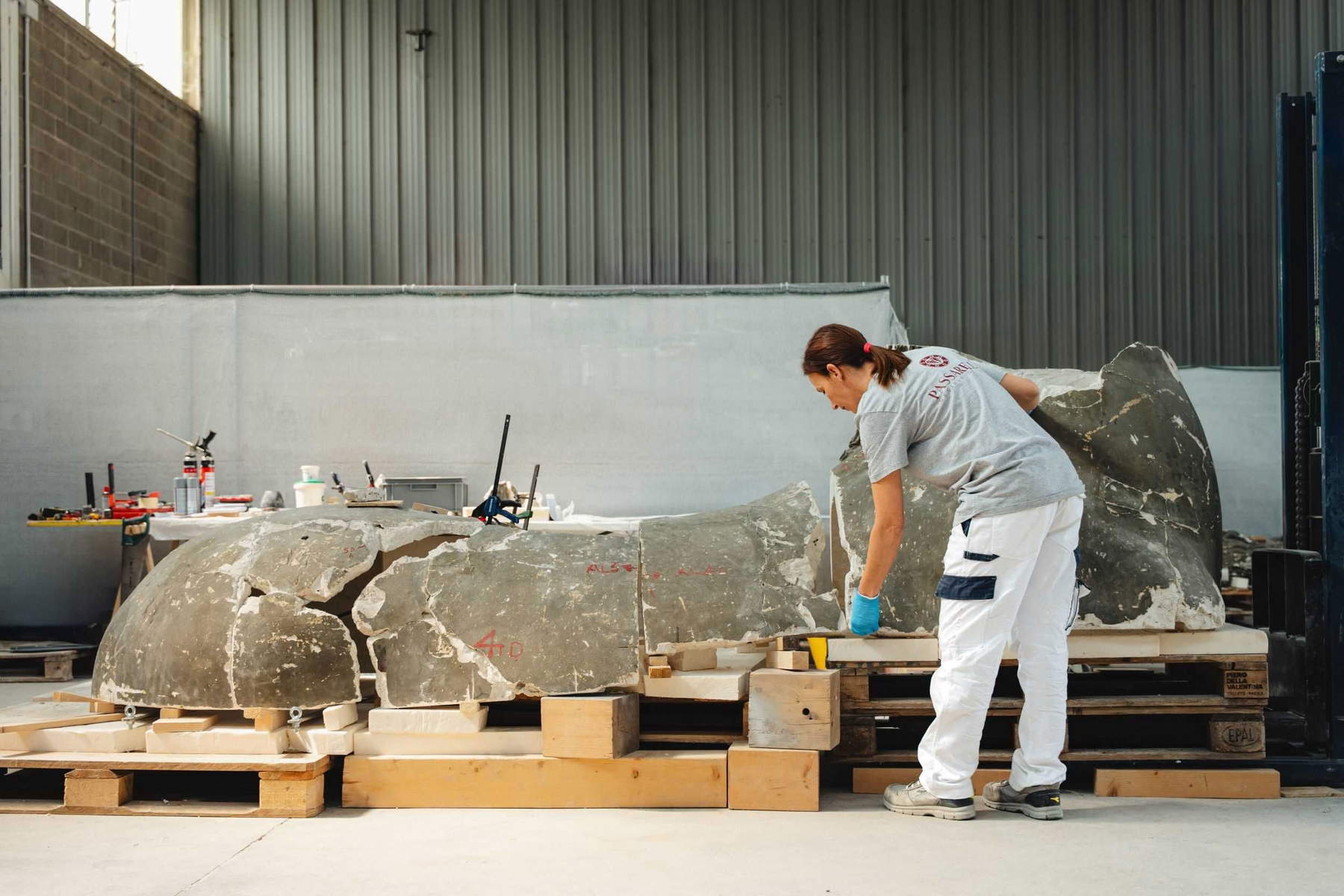
"A few days ago we inaugurated in Rome the twentieth edition of Restituzioni, confirming a commitment that our Bank has been carrying out with care and dedication for almost forty years alongside the territorial bodies of the Ministry of Culture," says Silvia Foschi, Head of Historical and Artistic Heritage and Cultural Activities of the Art, Culture and Historical Heritage Department of Intesa Sanpaolo. "The program has made it possible to restore more than 2,200 works of Italian heritage, testimonies of our history and identity, thanks to the expertise of the best restorers and scholars. Today we share the work done on Antonio Canova’s monumental Colossal Horse of the Civic Museums of Bassano del Grappa, a conservation intervention that stands out for the complexity and quality of the result achieved. A true restitution, to the community, to the territory, to the country. Creating an ideal bridge between Rome and Milan, the magnificent sculpture, with its power and harmony, will be the protagonist of the exhibition dedicated to the Napoleonic age that we will open in the coming weeks at the Gallerie d’Italia in Milan. The recovery of this extraordinary work is further evidence of a concrete responsibility toward the national artistic heritage."
“We are proud to be the Main sponsor of the restoration of Antonio Canova’s Cavallo Colossale and to have contributed to returning this masterpiece to its full magnificence,” says Anthony Roberts, Vice President of Venice in Peril Fund. “The project is part of Venice in Peril Fund’s long tradition of supporting conservation interventions in Venice and, more recently, in the Veneto region. As a resident of Bassano del Grappa, I am particularly pleased to have collaborated, not only with the restoration team that restored the work to its original appearance, but also with the institutions involved and Main partner Intesa Sanpaolo, and I look forward with great interest to the return of the Canovian masterpiece to its home: to the Museo Civico di Bassano del Grappa.”
"The Administration of Bassano del Grappa expresses deep satisfaction with the conclusion of the restoration of Antonio Canova’s Colossal Horse ," says the Bassano del Grappa Municipal Administration. “This is an ambitious project that gives new life to one of the masterpieces symbolic of Bassano del Grappa, which has always been committed to the protection and enhancement of its artistic heritage, and returns to the public a treasure of inestimable value that was believed to have been definitively lost. This achievement represents a moment of great pride for the city and testifies to the importance of the fruitful synergy between the public and private sectors that, thanks to the contribution of Intesa Sanpaolo and Venice in Peril Fund and the attention paid by the Ministry of Culture and the Soprintendenza Archeologia Belle Arti e Paesaggio, places the city of Bassano del Grappa as a cultural center of national and international importance.”
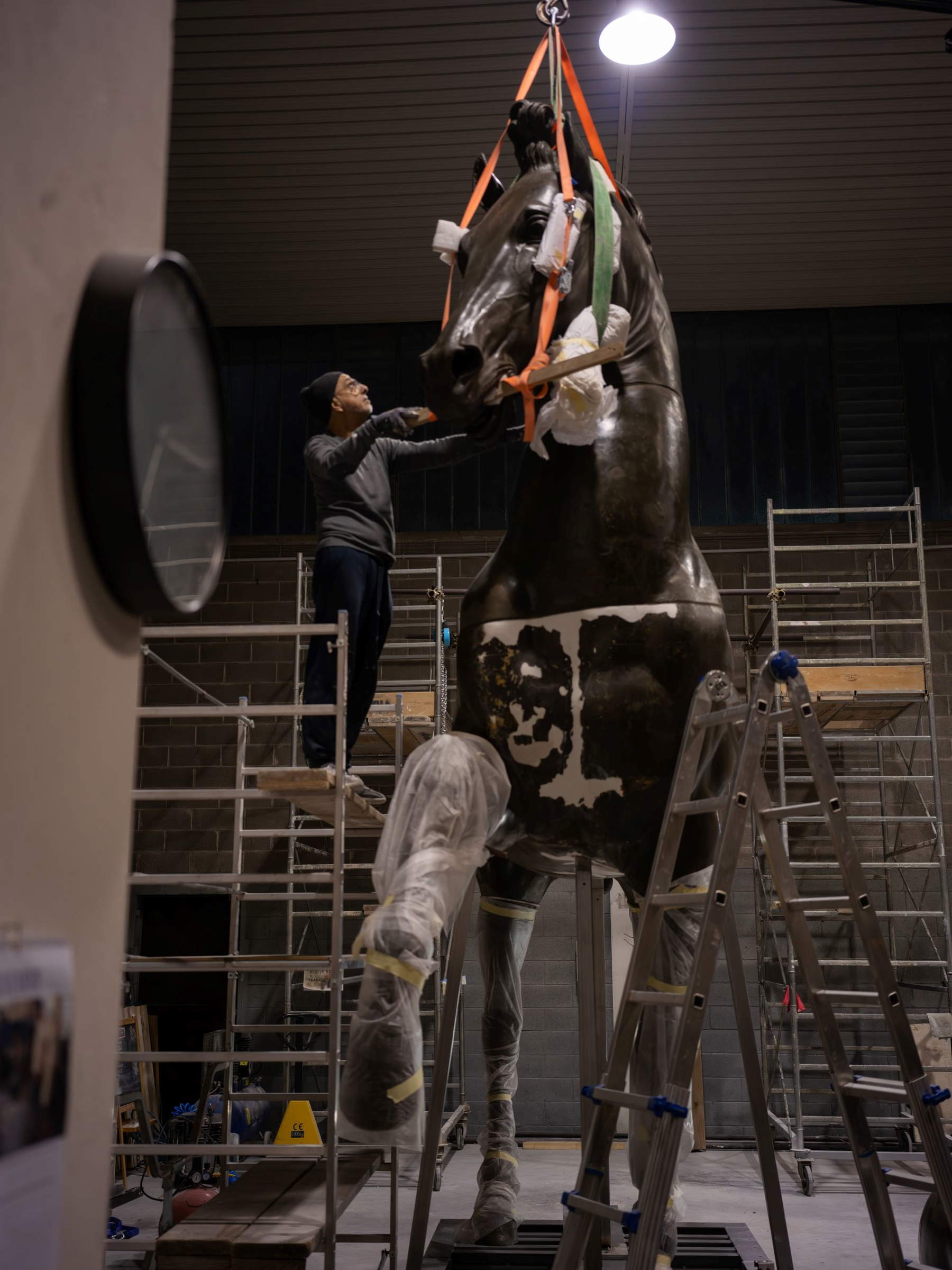
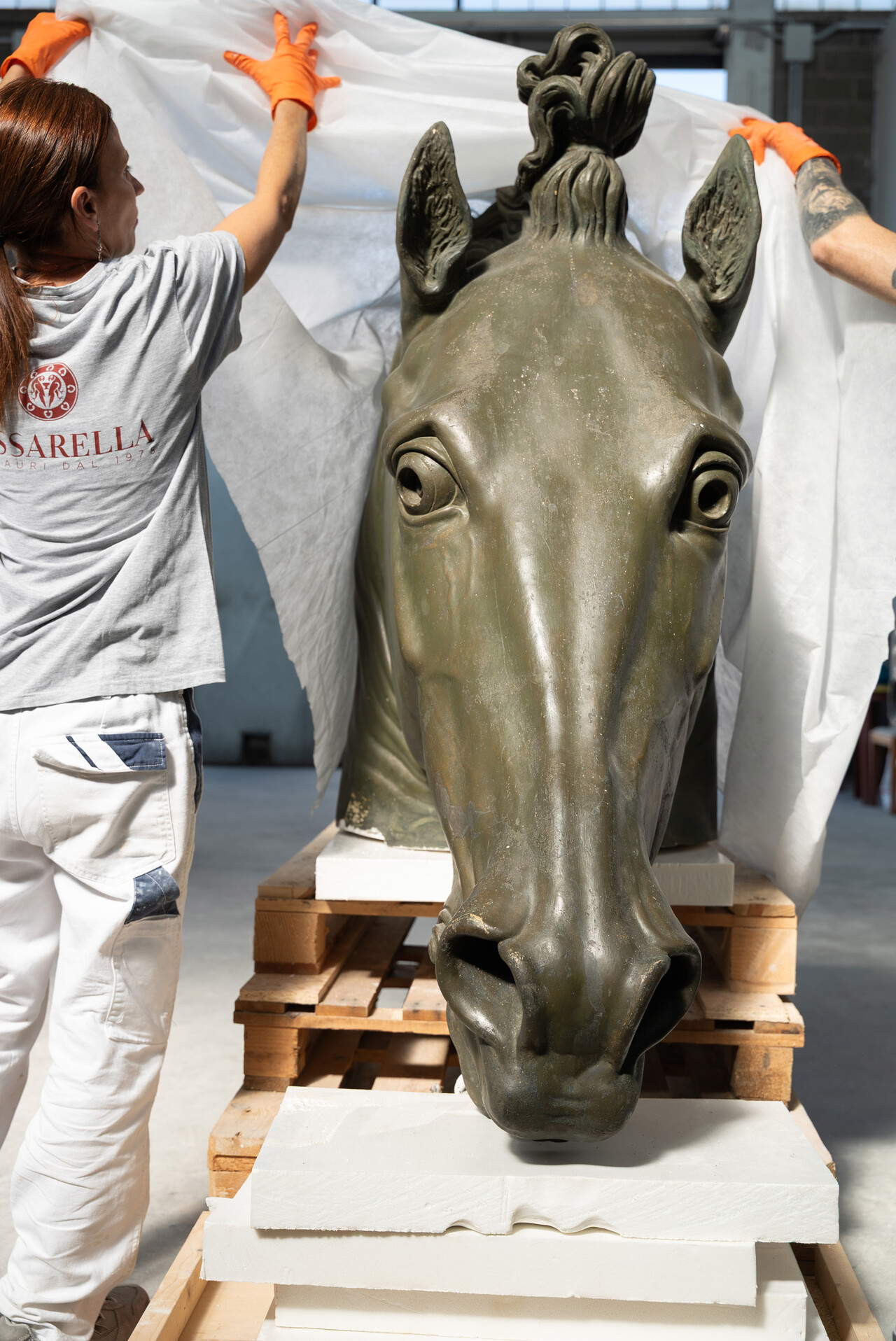
The intervention, entrusted to the company Passarella Restauri, began with a long phase of cataloging and study of the fragments, which brought to light unpublished data on the work and its conservation history. Indeed, the analyses revealed the presence of materials added during the 19th century, probably during the first reassembly carried out after the sculpture was transported from Canova’s Roman workshop to Possagno and later to Bassano del Grappa. The posthumous additions, made with plaster, brick shards, pottery, and metal planking, had significantly increased the Cavallo’s internal thickness and increased the work’s overall weight by more than four hundred kilograms, causing structural stresses that compromised its stability.
Careful lightening work, conducted manually and with precision tools, was necessary to restore the sculpture to its original consistency. During the operations, a fragment of a late 18th-century book also emerged, accidentally caught in the impasto, a singular testimony to the historical context in which the model had been created. Once the removal of irrelevant materials was finished, the long phase of reassembling the fragments began. The more than two hundred pieces of the Horse were studied one by one to identify correspondences and reconstruct contact points, until nine main macro-sections were created. These were then gradually juxtaposed and reassembled, several times, to eliminate unevenness and ensure a perfect fit of the surfaces. At the same time, a new internal load-bearing structure, designed to support the weight of the sculpture without burdening the legs, was designed in collaboration with R.S. Ingegneria of Padua, in line with the original approach conceived by Canova. The metal frame, made with earthquake-resistant criteria, discharges stresses onto a reinforced technological base, ensuring the preservation of the Horse even in case of vibrations or telluric events. The restoration was concluded with the aesthetic finishing of the surfaces, including the filling of gaps and the pictorial integration performed in watercolor and tempera. The color interventions were deliberately done in a slightly lighter shade than the original, so as to make the restored parts recognizable without compromising the overall harmony of the vision.
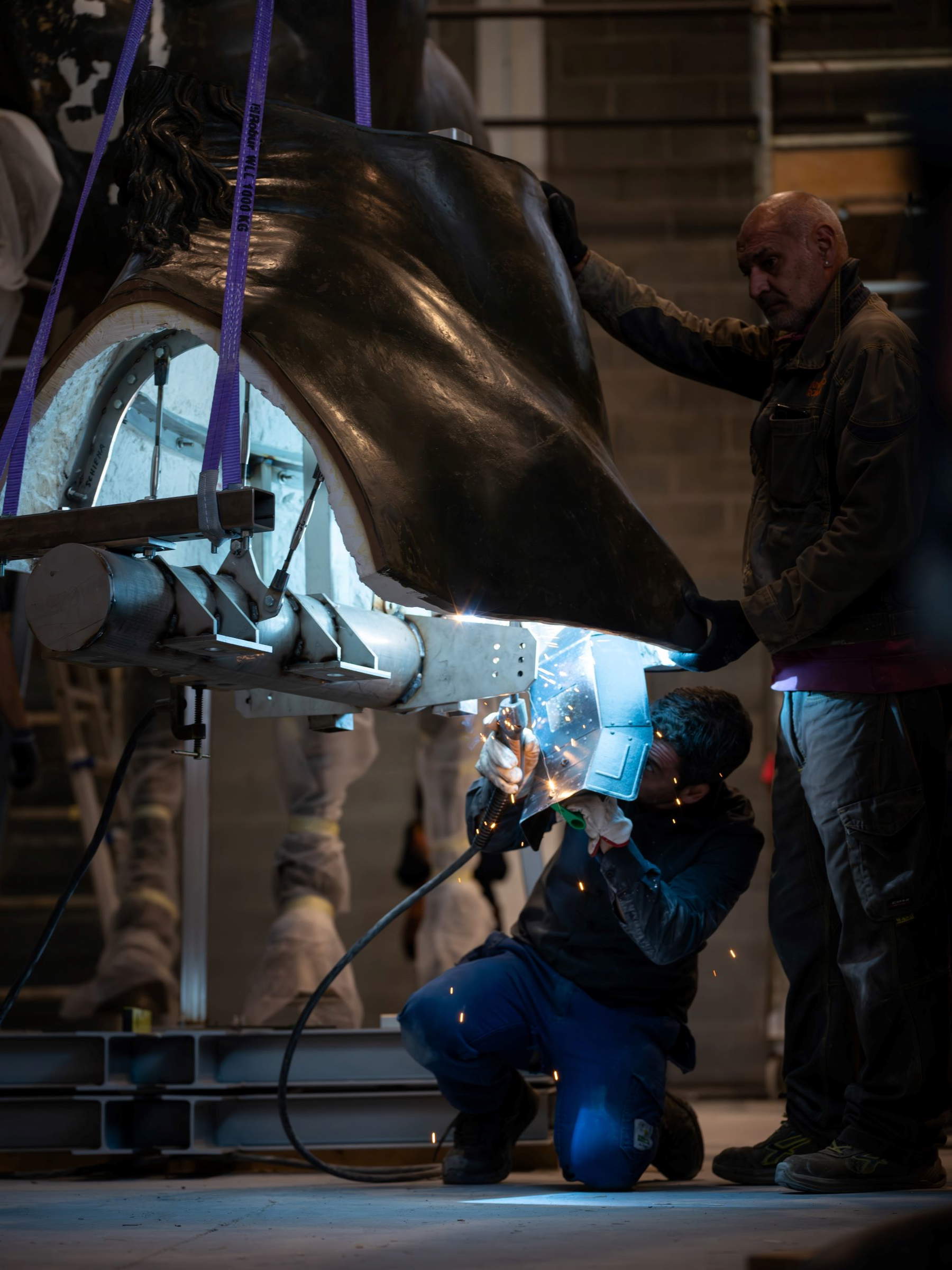
“The design and execution complexity of the intervention was rich in stimuli and a unique professional challenge,” says restorer Giordano Passarella of Passarella Restauri Srl. “The conclusion of this intervention represents an important moment of enhancement and knowledge, the result of a shared work that allowed the quality and expressive power of the work to be fully restored.”
“The Superintendence of Verona constantly followed the work, which was characterized by a constructive and competent dialogue between the client, the officials in charge of protection, the restorers, the engineers and the construction management,” says Superintendent arch. Andrea Rosignoli. “Only the confrontation between the various professionals involved made it possible to find the most suitable solutions in the extreme complexity of a restoration that is unprecedented in terms of the size of the work and the criticality of its constituent material. The Ministry of Culture has guaranteed its support for this undertaking from the beginning, with a capital contribution that will be provided thanks to the collaboration with the Soprintendenza Archeologia Belle Arti e Paesaggio for the metropolitan city of Venice.”
The public will be able to admire the fully restored sculpture for the first time at the Gallerie d’Italia in Milan, where it will be on display from November 28, 2025 as part of the exhibition Eternity and Vision. Rome and Milan capitals of Neoclassicism. The Colossal Horse will be the centerpiece of the exhibition, around which the entire narrative dedicated to the dialogue between the two cities in the time of Neoclassicism will revolve. After the Milan stop, the work will return to Bassano del Grappa to be relocated to the rooms of the Museo Civico, where it can once again be admired by visitors. The recovery of the Horse thus represents the restitution of an essential part of the city’s cultural identity and heritage in the Veneto region. The restoration has been accompanied by an audiovisual documentation that has followed every stage of it, realized thanks to the support of Venice in Peril Fund. The video reportage series, disseminated through the digital channels of the City and the Civic Museums of Bassano del Grappa, collects the testimonies of the protagonists involved and will offer, in a final episode, the public presentation of the finally reassembled masterpiece.
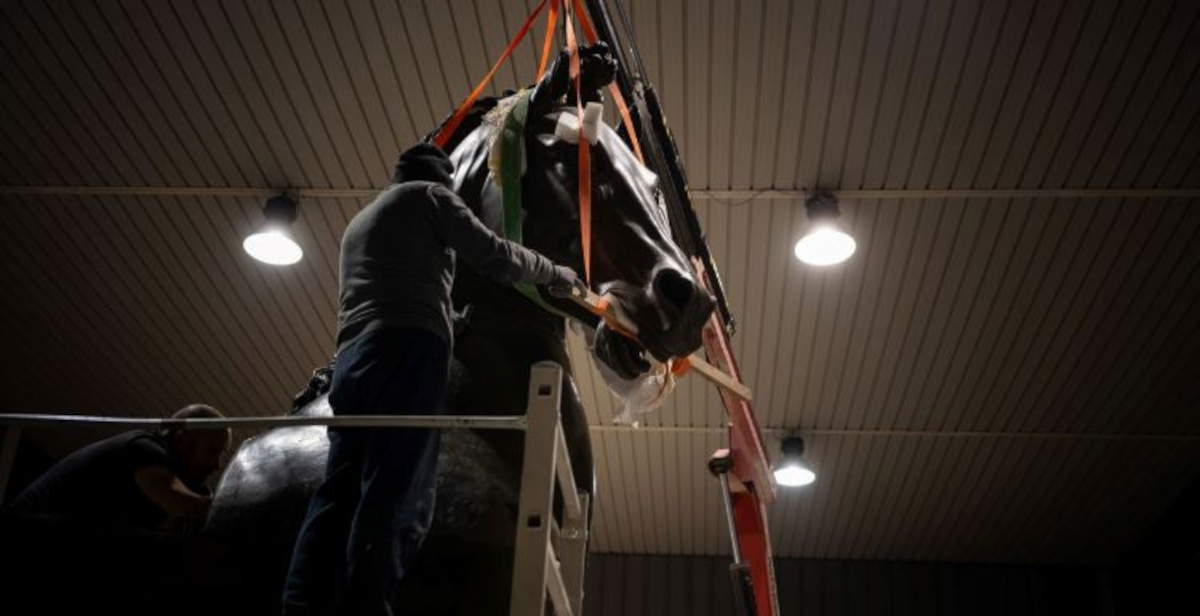 |
| Canova's Colossal Horse comes back to life after more than 50 years in storage |
Warning: the translation into English of the original Italian article was created using automatic tools. We undertake to review all articles, but we do not guarantee the total absence of inaccuracies in the translation due to the program. You can find the original by clicking on the ITA button. If you find any mistake,please contact us.